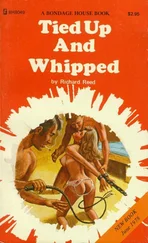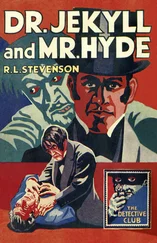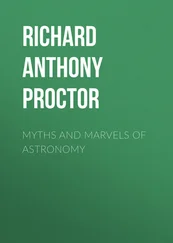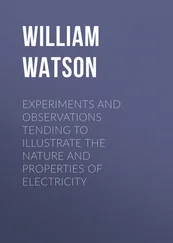Richard Fowler - Experiments and Observations
Здесь есть возможность читать онлайн «Richard Fowler - Experiments and Observations» — ознакомительный отрывок электронной книги совершенно бесплатно, а после прочтения отрывка купить полную версию. В некоторых случаях можно слушать аудио, скачать через торрент в формате fb2 и присутствует краткое содержание. Жанр: foreign_antique, foreign_prose, на английском языке. Описание произведения, (предисловие) а так же отзывы посетителей доступны на портале библиотеки ЛибКат.
- Название:Experiments and Observations
- Автор:
- Жанр:
- Год:неизвестен
- ISBN:нет данных
- Рейтинг книги:5 / 5. Голосов: 1
-
Избранное:Добавить в избранное
- Отзывы:
-
Ваша оценка:
- 100
- 1
- 2
- 3
- 4
- 5
Experiments and Observations: краткое содержание, описание и аннотация
Предлагаем к чтению аннотацию, описание, краткое содержание или предисловие (зависит от того, что написал сам автор книги «Experiments and Observations»). Если вы не нашли необходимую информацию о книге — напишите в комментариях, мы постараемся отыскать её.
Experiments and Observations — читать онлайн ознакомительный отрывок
Ниже представлен текст книги, разбитый по страницам. Система сохранения места последней прочитанной страницы, позволяет с удобством читать онлайн бесплатно книгу «Experiments and Observations», без необходимости каждый раз заново искать на чём Вы остановились. Поставьте закладку, и сможете в любой момент перейти на страницу, на которой закончили чтение.
Интервал:
Закладка:
From the fact, which I have before mentioned, that a limb may be made to contract, when the metals have apparently no communication with any part of it except its nerve; it might reasonably be doubted, whether, in any case, a communication between the muscles, as well as the nerve, and the metals, were necessary, in order that contractions may be excited.
Several considerations, however, induce me to believe, that such communication is absolutely requisite. If the contact of two different metals were alone sufficient to excite contractions; contractions should always take place, whenever a good conductor is interposed between the metals, and the nerve alone. But I have, in no instance, observed this to be the case. In the experiment, where the crural nerve must be supported upon a silver probe, it is necessary that the piece of silver, with which the zinc is brought in contact, should communicate either immediately, or through some good conducting medium, with the muscles of the foot, or leg, before any contraction takes place. And even in the experiment, where water forms the only communication between the metals, and the origin of the sciatic nerves, that same water, it must be observed, forms likewise a communication between the metals and the muscles, to which these nerves are distributed. But the fact, which appears to me most decisive of this question, is the following: When a nerve, which for some time has been detached from surrounding parts, is either carefully wiped quite dry with a piece of fine muslin, or (lest this should be thought to injure its structure,) suffered to remain suspended till its moisture has evaporated; no contractions can be excited in the muscles, to which it is distributed, by touching it alone with any two metals in contact with each other. But, if it be again moistened with a few drops of water, contractions instantly take place: and, in this way, by alternately drying and moistening the nerve, contractions may, at pleasure, be alternately suspended and renewed for a considerable time. It may, indeed, be contended, that the moisture softened, and thus restored electricity and free expansion to the dried cellular membrane surrounding the fibres, of which the trunk of a nerve is composed; and thus, by removing constraint, gave free play to their organization 8 8 M. Fontana, in the first volume of his work on Poisons, mentions some facts, which may, to some, appear to give considerable countenance to this explanation. The microscopical eels found in dry and smutty wheat; the seta equina or gordius of Linnaeus; and the wheal polypus, all, when dry, become apparently dead: but again recover motion and life when moistened with water. One of the latter was put, by M. Fontana, upon a bit of glass, and exposed, during a whole summer, to the noon-day sun. It became so dry that it was like a piece of hardened glue. A few drops of water, however, did not fail to restore it to life. Another was, in this way, recovered after a similar exposure of a year and a half. Father Gumillo, a Jesuit, and the Indians of Peru, are quoted by the same author, on the authority of Bonguer, as speaking of ‘a large and venemous snake, which being dead and dried in the open air, or in the smoke of a chimney, has the property of coming again to life, on its being exposed, for some days, to the sun, in a stagnant and corrupted water.’ But it would almost require the credulity of an Indian to credit the testimony of the Jesuit.
.
But from observing, that, in every other instance, where contractions are produced by the mutual contact of the metals, a conducting substance is interposed between them and the muscles, as well as between them and the nerve; I think it would be unphilosophical not to allow, that, in the instance in question, the moisture, adhering to the surface of the nerve, formed that requisite communication between the metals and the muscles.
I relate the following fact, in this place, because at the same time that it gives further confirmation to the above opinion, it affords an instance in which insulation diminished the effect of the metals. I had one day laid the nearly exhausted leg of a frog upon my hand, with a piece of zinc in contact with its nerve only; and, when I touched these with a silver probe, tolerably strong contractions were excited, even when the nerve appeared dry: but when both the leg and the metals, thus disposed, were insulated by means of glass and sealing wax, the contractions were scarcely perceptible. My hand, it would appear, had, in these instances, supplied the place of the moisture in the other; and been the conducting medium between the muscles and the metals.
This communication of the muscles with the nerve, through the medium of the metals, had appeared to Dr Valli a circumstance so essential to the production of Galvani’s phenomena, that (taking it for granted they were occasioned by the action of the electrical fluid), it seems to have suggested the hypothesis, which he has offered in order to account for them.
Aware that no electrical phenomenon can possibly have place, except between the opposite states of positive and negative electricity, or, in other words, where there is a breach of equilibrium in the distribution of the electrical fluid; he supposes it to be one office of the nerves, to produce this breach of equilibrium, by continually pumping (to use his own expression) the electrical fluid from the internal parts of muscles, and in this way rendering them negative, with respect to the external surface. The brain, he makes the common receptacle for this fluid. The metals, he seems to consider in the light of a conductor, interposed between the outside of muscles and their nerves. And the rapid transmission of the fluid to restore the equilibrium, as the cause of the contractions.
He presumes his hypothesis proved from the following considerations:
I. The interval which commonly takes place between the contractions; which interval, according to him, is necessary for the restoration of the breach of equilibrium.
II. From observing, that fishermen, in order to preserve their fish from putridity, crush their brains; and thus, by interrupting the medium between the external and internal surfaces of muscles, prevent these repeated discharges of the electrical fluid, which, according to Dr Valli, hastens their putridity.
III. From finding that in general, when the sciatic nerve on one side of a living frog was divided, the other being left entire, communicating with the brain, both armed and equally excited, the limb, in which the nerve had been divided, preserved its power of contracting longer than the other. From this well devised experiment, he concludes, likewise, that animal electricity is the principle of life. That, on the side where the nerve remained entire, it was withdrawn from the muscles, and deposited in the brain. That, from the impossibility of this taking place on the other side, where the nerve was divided, it had continued in the limb, and enabled it to contract.
If it were indisputably true, as I once believed, that contractions could be excited in a limb without the metals having any communication with it, except through the medium of a nerve; this circumstance would alone be a sufficient refutation of Dr Valli’s hypothesis: but, as I have already shewn, that contractions were not in this way produced in any experiment, which I have made, when no moisture, forming a communication between the metals and the muscles, had been left adhering to the surface of the nerve, it becomes necessary to have recourse to less dubious arguments.
The Dr should have recollected that, in cases of a breach of equilibrium in the distribution of the electrical fluid, all that is required, in order to restore equality of distribution, is, the interposition of a single conducting substance between the place in which it abounds, and that in which there is a deficiency. Whereas, in the phenomena, which he attempts to explain, two conducting substances are necessary to the effect.
Читать дальшеИнтервал:
Закладка:
Похожие книги на «Experiments and Observations»
Представляем Вашему вниманию похожие книги на «Experiments and Observations» списком для выбора. Мы отобрали схожую по названию и смыслу литературу в надежде предоставить читателям больше вариантов отыскать новые, интересные, ещё непрочитанные произведения.
Обсуждение, отзывы о книге «Experiments and Observations» и просто собственные мнения читателей. Оставьте ваши комментарии, напишите, что Вы думаете о произведении, его смысле или главных героях. Укажите что конкретно понравилось, а что нет, и почему Вы так считаете.












